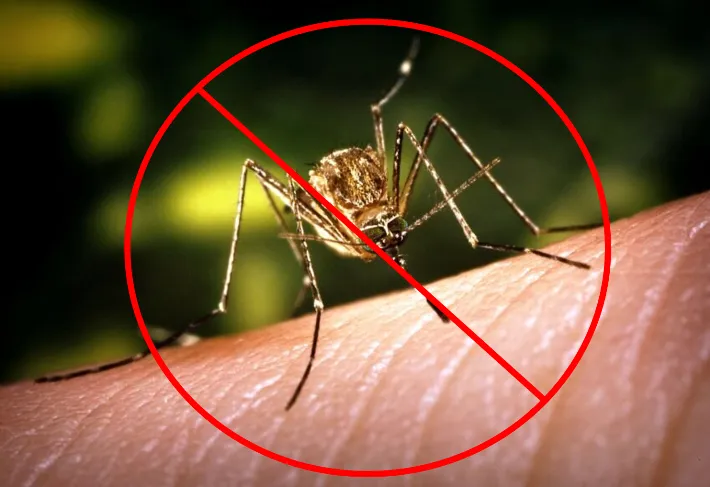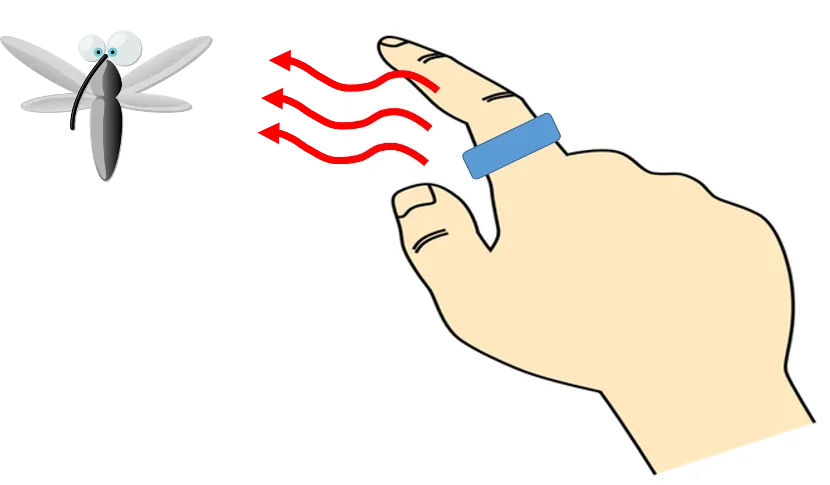Surely we all, especially when we do some outdoor activity, have suffered at some point from mosquito bites and mosquitoes, and we know that it is a very uncomfortable situation, but the risk of the bite of this type of insects is not only that they can leave a welt on the skin or itching, but some mosquitoes can transmit serious diseases, such as dengue or Zika. And to avoid mosquito bites, one of the best alternatives is to use insect repellent.

Source: edited image, original from pixinio.com.
According to the World Health Organization (WHO) in its article on vector-borne diseases, vector-borne diseases account for 17% of all infectious diseases and cause more than 700,000 deaths each year, the most frequent being malaria, dengue fever, Chikungunya fever, yellow fever, among others. Dengue is the most frequent mosquito-borne viral infection.
It is evident then that the use of repellents is an important part of any program to control mosquito bites and prevent disease transmission, and although these products usually have a broad spectrum of activity and are effective against numerous types of insects, when applied as lotions or sprays they tend to provide few hours of protection, since their components evaporate very quickly.
Scientists at Martin Luther University Halle-Wittenberg (MLU) have therefore come up with an innovation in this field and developed a device that delivers an insect repellent in a controlled manner. To manufacture the device, the active ingredient of the repellent is first encapsulated, and with the help of a 3D printer it is given the desired shape, such as a ring, which can simply be worn while releasing the active agent that repels mosquitoes, doing so for much longer than just spraying it on the skin. This team of scientists recently presented their work in the International Journal of Pharmaceutics.

Image elaborated in Powerpoint. The image of the mosquito and the hand are in the public domain.
As an active ingredient, the scientists used the compound ethyl butylacetylaminopropionate, commercially called IR3535, a repellent developed by MERCK that has demonstrated high efficacy and a high margin of safety for humans, which is why it has been used as a repellent for a long time, and applied as a lotion or spray it provides several hours of protection.
And to release the repellent in a controlled manner, the researchers designed a 3D printing technique to encapsulate the mosquito repellent in a biodegradable polymer, poly-L-l-lactic acid (PLLA), a polymer derived from lactic acid. The idea is that the polymer/solvent system poly(l-lactic acid)/ethyl butylacetylaminopropionate (PLLA/IR3535) can be given the desired shape, such as a ring or bracelet, so that the liquid repellent encapsulated in the solid polymer will evaporate continuously when the device is worn, thus repelling mosquitoes.
The experiments demonstrated that it is possible to print 3D parts with a repellent content of up to 25%, with minimal loss of the active component during the printing process. And although the researchers point out that the evaporation rate of the repellent depends on several factors, such as the concentration of the repellent and the ambient temperature, after several trials they were able to determine a duration time rate in the order of 10 days.
And while the researchers have pointed out that the devices are still only prototypes that now need to be tested in real conditions, their work was able to demonstrate the applicability of extrusion 3D printing for the production of polymer parts with a specific shape, containing mosquito repellent.
Hopefully, we will soon find on the market devices such as rings or bracelets capable of delivering insect repellent in a controlled manner, thus ridding us for a longer time of their annoying, and sometimes dangerous, bites.
Well friends, I hope you liked the information about this mosquito repellent device. See you next time!